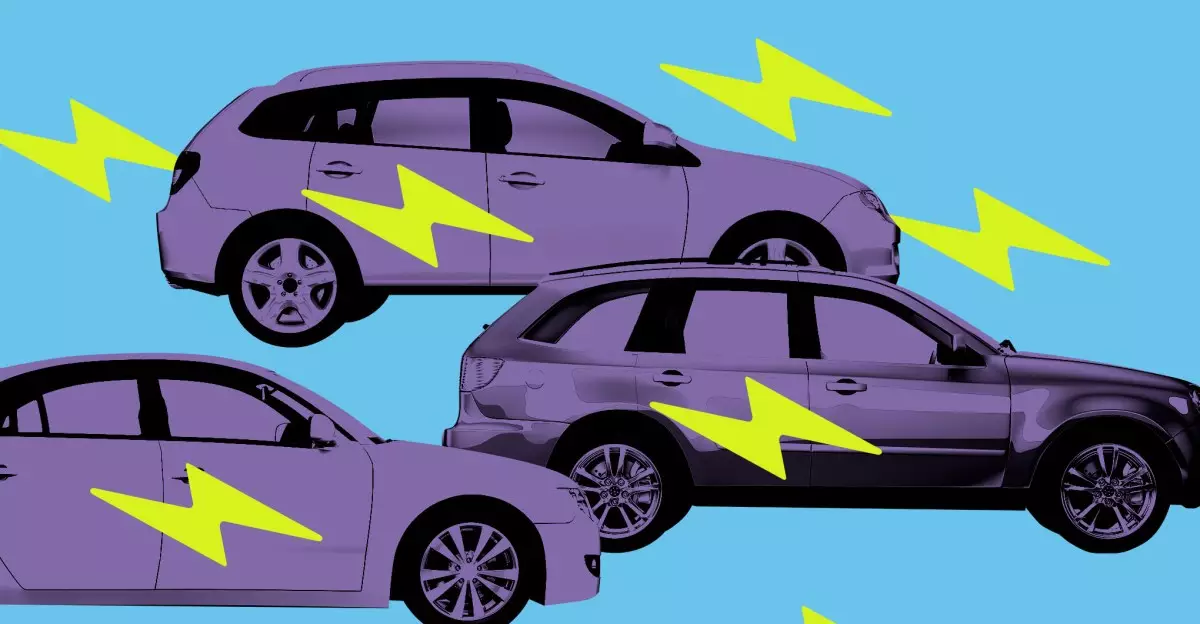In an era where technology pervades nearly every aspect of our lives, the integration of monitoring systems into our driving habits presents a promising avenue for enhancing road safety. An enlightening study by the AAA Foundation for Traffic Safety has revealed that real-time tracking of driving behaviors via smartphone applications can significantly improve road safety. This is an insightful reflection on the potential benefits of technology, which can empower drivers to make conscious decisions that enhance their safety and that of others. By borrowing principles from the emerging field of usage-based insurance (UBI), this study challenges preconceived notions about driver monitoring and safety.
Real-Time Feedback: A Library of Insights
The study in question engaged 1,400 participants, dividing them into various categories to assess the effectiveness of real-time feedback on their driving. The methods employed included feedback through text messages and detailed dashboards that revealed their driving behaviors. These modern advancements could potentially transform our understanding of vehicle behavior—ushering in a new era where data drives action. It’s remarkable that even minor shifts in behavior—like reducing hard braking or accelerating less rapidly—can foster safer road conditions. Data suggests that the feedback mechanism works wonders; among those monitored, 21% decreased hard braking incidents, and 25% curtailed aggressive acceleration—figures that underscore how targeted information can inspire tangible change.
Changing Behavior Through Engagement
Digging deeper into the findings, one cannot ignore the role of engagement in altering driving behaviors. Participants were surveyed about motivational factors for changing their habits, and the results were telling. A substantial 67.4% indicated that financial incentives would motivate them to drive safer. Additionally, 53.9% welcomed weekly feedback via messages, and 45.8% preferred a comprehensive weekly driving report. This implies that more than just passive tracking, an active dialogue is essential in altering behaviors. People do not just want statistical data; they crave interaction and engagement that informs them and provides a tangible reflection of their progress.
Despite the clear benefits observed through the feedback mechanisms, the study also revealed sobering insights: Behaviors like smartphone usage while driving remained unchanged. This contradiction suggests that, while people may improve certain aspects of their driving when motivated, fundamental habits—like the compulsion to be on their phones—are harder to modify. What this denotes is a stark reality: even when offered feedback, drivers may believe they are managing their risks adequately. This overconfidence, in essence, blunts the corrective actions that are necessary for comprehensive behavioral change.
Long-Term Implications for Road Safety
Perhaps the most encouraging finding is the persistence of safer driving behaviors beyond the study’s active monitoring phase. Even after the feedback stopped, participants largely continued to drive more safely for an additional six weeks. This raises an important question: can the introduction of monitoring technologies lead to lasting behavioral changes? The answer, as suggested by AAA’s Director of Traffic Safety Advocacy Jake Nelson, is overwhelmingly positive—illustrating the efficacy of positive reinforcement over punitive measures. By nurturing a culture of safety rather than fear, such programs could potentially save lives in an industry plagued by high rates of fatalities.
As we consider the staggering statistic that over 40,000 lives were lost to vehicle crashes in the U.S. in 2023, the urgency for innovative solutions becomes apparent. The ubiquity of UBI programs is on the rise, with more consumers opting in as they grapple with their own safety awareness. It’s fascinating to witness a gradual shift where drivers begin to embrace the monitoring of their habits, much like they would track their physical health through apps for fitness, nutrition, and sleep.
The Big Question: Are We Ready for Change?
However, the fundamental question remains—are people ready to accept this shift in accountability? Historically, many drivers harbor a resistance to being tracked, viewing it as an invasion of privacy. The challenge lies in overcoming this hesitance and reshaping how we perceive our driving habits. Rather than seeing monitoring as a form of surveillance, it should be positioned as a form of empowerment—enabling individuals to take charge of their safety narratives proactively.
In an age defined by technology’s transformative power, the drive towards smarter, data-informed roads does not just present an opportunity for insurers but reveals a profound societal shift toward care and responsibility within our communities.

